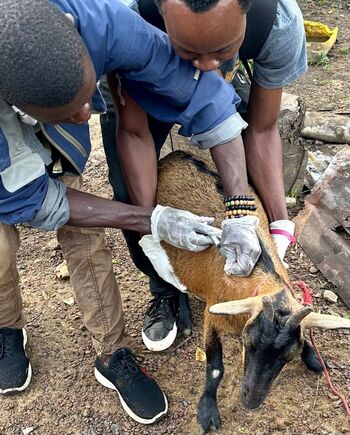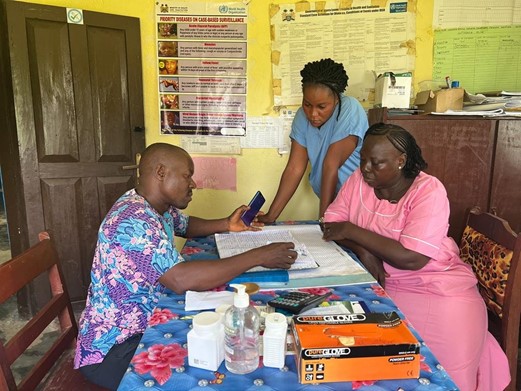Building resilient health care systems in Kambia, Kailahun and Pujehun
Strengthening the health system and epidemic prevention
-
Commissioning Party
German Federal Ministry for Economic Cooperation and Development (BMZ)
-
Country
-
Lead executing agency
More
-
Overall term
2024 to 2026
-
Other Stakeholders
World Health Organization (WHO), United Nations Children's Fund (UNICEF), United Nations Population Fund (UNFPA), UK Foreign, Commonwealth and Development Office (FCDO), World Bank
-
Products and expertise
Social development

Context
In Sierra Leone, the mortality rate of mothers and newborns is higher than average. The quality of health care services is inadequate, which is partly due to insufficiently trained staff.
At the same time, disease outbreaks that are transmitted from animals to human occur regularly.
Objective
Sierra Leone’s health care system is better aligned with the needs of selected population groups in the districts of Kambia, Kailahun and Pujehun.
Approach
In Kambia, Kailahun and Pujehun, the project is developing the capacities of service providers. Together with Sierra Leone’s Ministry of Health and Sanitation, it is developing gender-sensitive training measures in the districts and training health care staff in emergency obstetric and newborn care, digital skills and One Health. A support programme, in which staff from two midwifery collages advise health care staff at the facilities, supplements the training courses in emergency obstetric and newborn care.
At the same time, the project is establishing supervisory visits to health care facilities and mechanisms with which the population can provide feedback on the quality of the facilities. This increases the quality of the health care services.
The project also promotes the One Health approach in the three districts. This allows professionals in human health, animal health and the environment to work together in a structured way to control epidemics more effectively.
 © GIZ / Tennyson Momoh
© GIZ / Tennyson MomohLast update: March 2024






